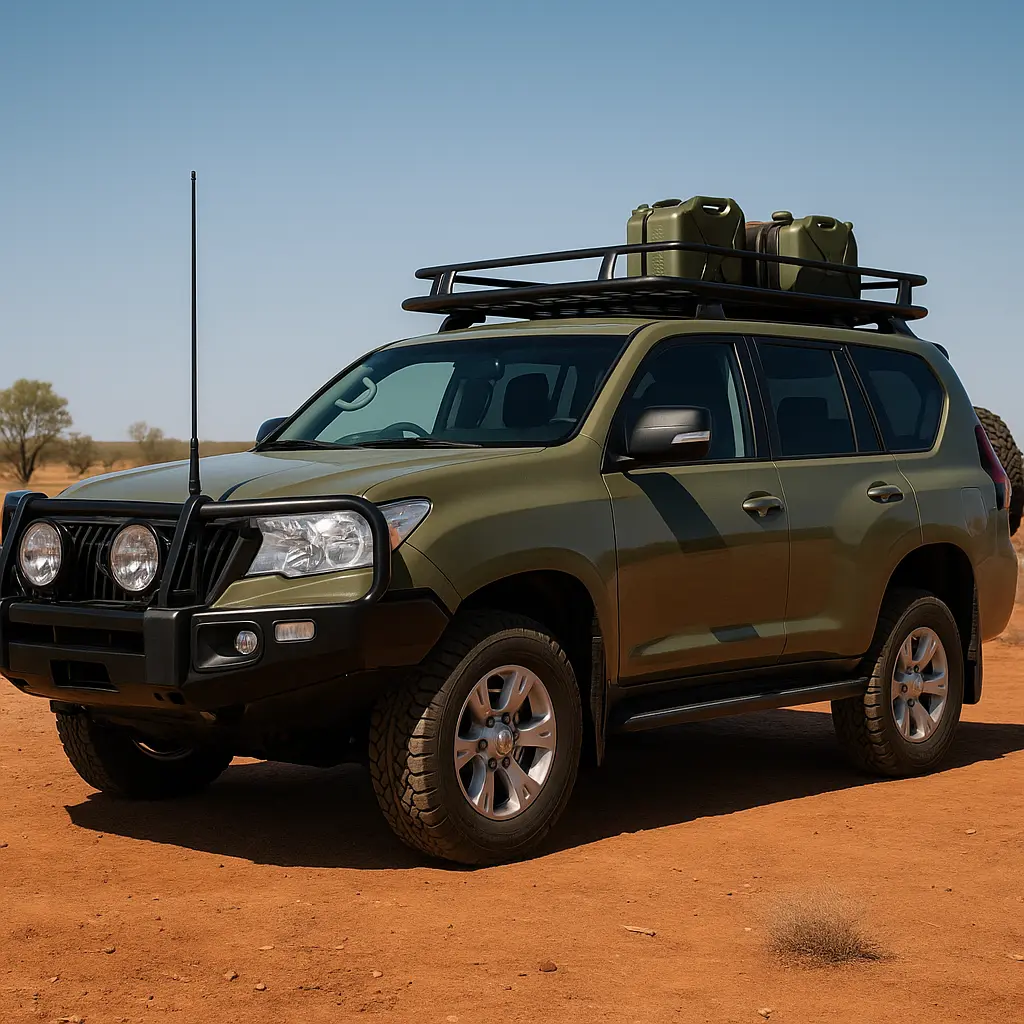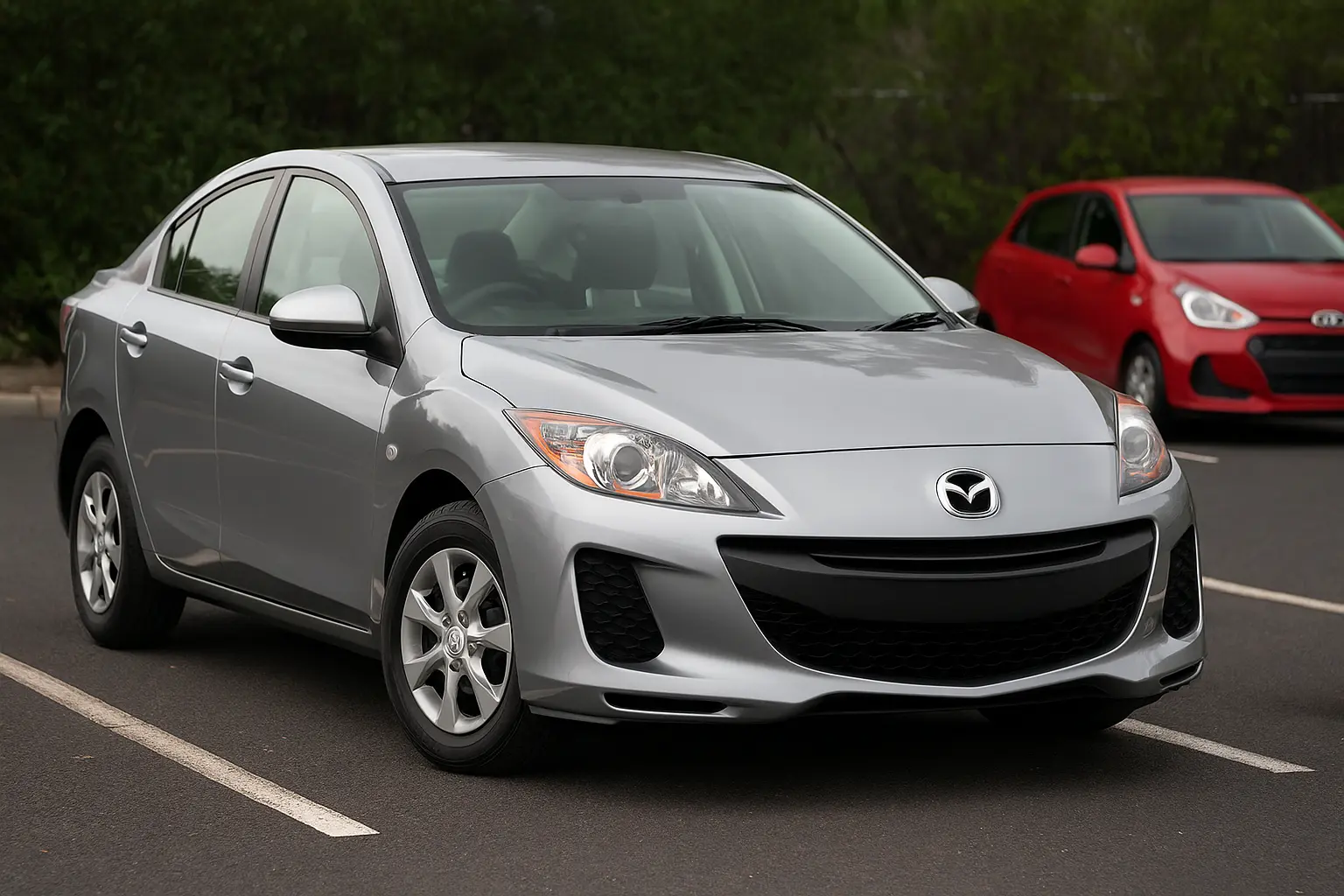🛻 How to Prep Your Car for an Outback Trip – 2025 Safety Checklist
Australia’s outback is vast, beautiful, rugged—and unforgiving. Whether you’re heading to Uluru, exploring the Kimberley, or crossing the Simpson Desert, venturing into remote areas without proper car preparation can turn your trip into a disaster.
Here’s your ultimate 2025 outback driving guide, with a complete checklist to get your vehicle—and yourself—ready for a safe, successful off-grid journey.
🧭 Why Proper Outback Preparation Matters
Australia’s outback spans over 70% of the continent but is home to less than 10% of the population. That means:
Long stretches without fuel stations
Limited phone reception
Extreme heat or cold
Unsealed, corrugated, or flooded roads
Potential breakdowns far from help
A reliable vehicle isn’t a luxury out here—it’s a lifeline. Let’s break down how to prepare your vehicle, gear, and plan for your 2025 outback adventure.
🚙 1. Choose the Right Vehicle
Not all vehicles are made for remote terrain. Ideally, choose:
✅ 4WD or AWD Vehicles
Look for high ground clearance, low-range gearing, and off-road credentials.
Top Outback Choices in 2025:
Toyota LandCruiser 300 Series
Ford Ranger Wildtrak or Raptor
Isuzu D-MAX X-Terrain
Toyota Prado
Nissan Patrol Warrior
🚫 Avoid:
City-focused crossovers or small SUVs
EVs with limited range and no charging network in remote areas
Cars with low ground clearance or road-biased tyres
🧰 2. Vehicle Inspection Checklist
Before any outback journey, conduct a full mechanical check or visit a trusted mechanic.
🛠️ Engine & Fluids
Oil: Fresh oil change is a must.
Coolant: Check levels and ensure no leaks.
Brake fluid: Top up and inspect.
Transmission fluid: Important for automatics in hilly or sandy terrain.
Battery health: Replace if it's over 3 years old.
🛞 Tyres
Condition: No cracks or bald spots.
Type: AT (All-Terrain) or LT (Light Truck) rated.
Spare tyres: Carry at least one full-size spare (ideally two).
Tyre repair kit & compressor: Essential for punctures in remote zones.
🔧 Suspension & Undercarriage
Check for worn shocks, bushes, or suspension arms.
Ensure bash plates are installed for protection.
Inspect fuel lines, brake lines, and underbody damage.
💡 Lights & Electricals
Test headlights, indicators, brake lights, and high beams.
Install LED light bars for night-time remote driving (check local laws).
UHF radio and GPS systems should be hardwired and functioning.
📦 3. Load Smart with the Right Gear
You’re not just packing for a picnic. The outback demands specific tools and supplies.
🧭 Navigation & Communication
Offline GPS maps (Hema, Wikicamps, Gaia)
Paper maps as backup
UHF Radio for convoy and emergency use
Satellite phone or emergency beacon (PLB/EPIRB)
🧳 Recovery Gear
Snatch strap
Rated shackles
Recovery boards (e.g. Maxtrax)
Winch (electric or manual)
Shovel
High-lift jack
🔋 Power & Lighting
Portable battery pack
Dual battery system
Solar panels for longer stays
Headlamps, torches, and LED camp lights
🛠️ Spare Parts & Tools
Fuses and bulbs
Belts and hoses
Engine oil, brake fluid, coolant
Basic tool kit
Duct tape, zip ties, hose clamps
🧯 4. Safety Equipment & Emergency Supplies
In the outback, help could be hours—or days—away.
🚑 First Aid
Snake bite kit
Trauma dressing
Burn gel and emergency blanket
Extra medications (if required)
🔥 Fire & Shelter
Fire extinguisher
Fireproof gloves
Compact tent or swag
Emergency shelter or tarp
🚰 Food & Water
Minimum 5L of water per person per day (plus 2–3 days extra)
Long-life food: canned goods, protein bars, dry snacks
Portable stove and cookware
🌞 Weather Prep
UV-rated sunscreen
Wide-brim hat and sunglasses
Thermal blankets and rain jackets
⛽ 5. Fuel & Range Planning
Fuel stops are sparse. Plan around fuel range and topography.
🛢️ Fuel Strategies
Know your vehicle’s real-world range (not brochure claims).
Carry jerry cans with proper fuel-rated seals.
Use diesel if possible—more efficient and less flammable.
Know where the last fuel stop is before remote entry.
📅 6. Plan Your Route Strategically
🧾 Do:
Inform someone of your itinerary.
Get local road condition reports (via apps or regional shires).
Check for weather alerts or closures.
Avoid solo travel if you’re a first-timer.
🚫 Don’t:
Rely solely on Google Maps.
Travel unfamiliar tracks after dark.
Assume your phone will have signal.
🧼 7. Final Pre-Trip Car Prep
Before departure:
Wash and inspect your undercarriage for leaks or cracks.
Secure your load using straps, cargo barriers or nets.
Label boxes so essentials are easy to access.
Disable auto-stop/start on sand or deep corrugations.
Disable traction control when necessary (some off-road conditions).
🔄 8. Mid-Trip Maintenance Tips
Even if everything checks out pre-trip, the outback can be tough on gear.
Do periodic checks:
Tyre pressure and tread wear
Engine bay for dust buildup or loose wires
Underbody inspections for knocks or leaks
Battery terminals for corrosion
Water and fuel levels daily
🗺️ 9. Know the Risks: Common Outback Hazards
🐂 Livestock and Wildlife
Kangaroos, camels, emus, and cattle can cross roads unexpectedly—especially at dawn/dusk.
🌡️ Heat and Dehydration
Temperatures can exceed 45°C. Cars overheat, batteries die, people get sick.
🚧 Road Hazards
Corrugations and bulldust
Flash flooding in creek beds
Washed-out tracks and sudden dips
🚘 10. What If You Break Down?
Stay With Your Vehicle
It’s easier to find a car than a wandering person.
Conserve Resources
Stay in the shade
Ration water
Only run the car for short periods to avoid fuel loss
Use Signal Devices
Raise your vehicle bonnet
Place hazard triangles far behind the car
Turn on hazard lights (if battery permits)
🧾 Bonus: Pre-Trip Documentation
Have copies (digital and physical) of:
License
Vehicle registration
Comprehensive insurance
Roadside assistance info (check remote coverage)
Permits (some regions require 4WD permits or indigenous land access)
🏁 Final Thoughts: Survive and Thrive on Remote Aussie Roads
Exploring the outback is a uniquely Australian adventure—but it comes with real risks. With the right preparation, your trip can be both thrilling and safe.
Prepping your vehicle is non-negotiable. It’s not just about performance—it’s about survival. Follow this 2025 safety checklist, keep your equipment sharp, and don’t underestimate the land you’re about to traverse.
Drive smart. Plan well. And enjoy the vast red heart of Australia.
Leave a comment
Your email address will not be published. Required fields are marked *




















